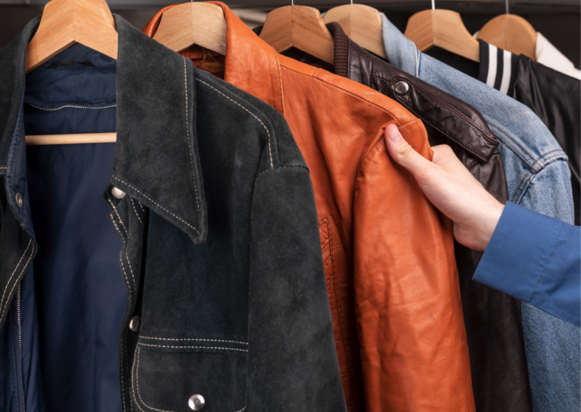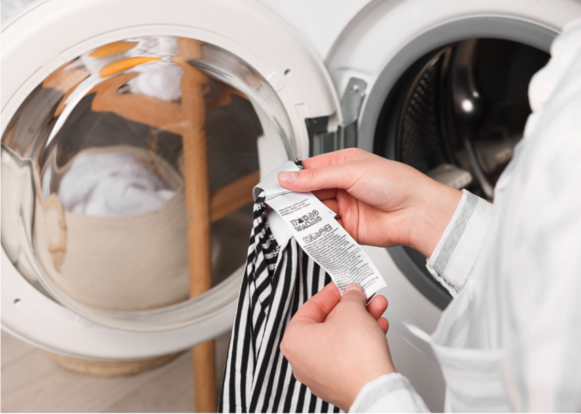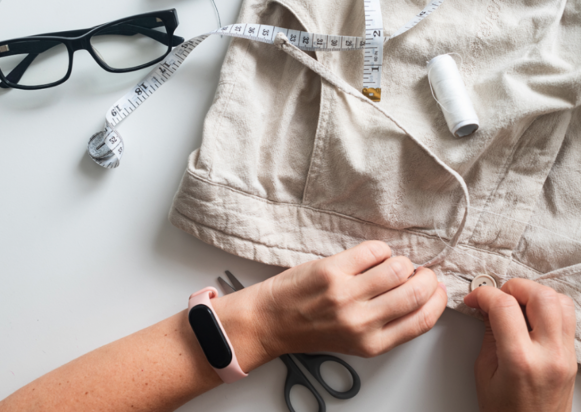5 Tips For Sustainable Fashion That Won’t Harm The Environment
Written by Andrea Vale
We’ve all seen them: stores and websites that offer a colorful, seemingly endless rotation of all kinds of clothing at very low prices. Brands like Forever 21, H&M, Uniqlo, and Zara are at the forefront of the rise of “fast fashion,” mass-produced clothing at lightning speed to provide consumers with an endless stream of affordable options.
But fast fashion destroys the environment, causing environmental damage at every stage, from production and shipping to disposal. The UN Alliance for Sustainable Fashion estimates that fast fashion up to 8% global carbon dioxide emissions. That’s more than all the emissions from international aviation and ocean transportation combined. Clothing and textile waste—which fashion produces in large quantities—is the fastest growing form of waste in the country. Worldwide, more than $100 billion clothing materials are destroyed every year, according to an analysis by the Circular Fibers Initiative.
Along with its environmental harm, fast fashion is a source of widespread human rights abuses. Rapid change and high productivity are only possible because of low wages, long hours, and unhealthy working conditions for workers, often in many countries of the world. A typical employee is a fast fashion designer he gets only half of the living wageand those numbers drop even lower for women and children. Only Shein sellers are reported to have placed the order 18 hour days with no breaks and paying workers a minimum of 3 cents per item produced.
Finally, the cost of fast fashion is very high, even if the price tag is very low.
Good news? There is a way to be fashionable without feeding this dangerous system. And you don’t have to redo your entire room to get started.
The real one put together five tips for sustainable fashion that will lower your impact on the environment—and your wallet. From the way you buy clothes to how you care for them and even the thought you put into designing your wardrobe, there are many small lifestyle changes you can make while having fun. in your own way.

Iryna Imago // Reproduction
Try to avoid buying from fast fashion stores
While their low prices may be tempting, avoiding fast fashion from brands like Shein, Zara, Temu, and Fashion Nova can benefit your budget and the environment. These species produce hundreds of new species per week (ca Shein above 1,000), producing a lot of waste.
Most of these clothes are made of polyester, which produces three times the greenhouse gas emissions compared to cotton and can take 200 years to decompose. And that doesn’t even take into account logistics: many fast fashion retailers use only the internet and rely on global logistics to reach customers, which creates dangerous greenhouse gas emissions. global warming; Shein and Temu send about 600,000 combined packages in the US every day, according to the June 2023 US Congress report. Once a fast fashion item reaches its destination, its lifespan is almost over—on average, it won’t get more than 10 wears.
In short, while fast fashion can be cheap to buy, in the long run, your wallet will thank you for investing in pieces that last. At the same time, the best way to practice sustainable fashion is to wear the clothes you already own, so don’t be too quick to throw away the fast fashion pieces you may already own. have them. Instead, take good care of them so that they last as long as possible.

Dmitry Naumov // Shutterstock
Check out the growing vintage clothing market
Buying second-hand clothes is a great way to give used clothes another life, and it’s often cheaper than buying new. On average, shoppers who shop at thrift stores can save about $150 a month, or $1,760 a year. Thrift stores aren’t your only option either. Vintage stores sell unique pieces from decades past, and there is a growing market for online clothing rental services that allow customers to rent clothing at a fraction of the cost. those who buy it, wear it, then return it to be passed on to the wearer.
When you buy a good piece of clothing, try the 30 Wears Challenge by pausing to think about whether you’ll wear the item at least 30 times before you give up your credit card. In fact, it’s even better to see yourself wearing it forever!
This does not mean that you need to buy only used goods or to repair all your clothes; if each consumer bought only one piece of clothing instead of a new one this year, the reduction in the production of new clothing would reduce CO2 emissions by over 2 million pounds and save 23 billion gallons of water.

New Africa // The closing ceremony
Extend the life of your clothes
Taking good care of your clothes extends their life, which means you’ll spend less money—and use less environmental waste—to replace them. Many habits don’t require much effort but can make a big difference in how long your clothes last, such as washing your denim inside out, using steam instead of ironing, or invest in a sewing machine for knitwear.
The care instructions inside your clothes provide important information for proper care, including the best temperatures and cycles for washing different fabrics in the machine or washing time. by hand. Drying your clothes properly is also important, as fabric damage accounts for 29% of discarded clothes.
vi mart // Discharge function
When clothes no longer fit, don’t throw them away—change them
We all change sizes throughout our adult lives—but if we threw out our clothes and bought a new wardrobe every time this happened, we’d be hurting our pockets. us and the environment. Instead, learning basic sewing skills can save you a lot of time and money, while reducing waste.
Another option is to take your clothes to a local tailor. While alterations may seem expensive, they can save you money in the long run and provide a reliable fix to ensure you never have to part with your favorite sweater. Additionally, brands (including Patagonia, MUD Jeans, and Chaco) offer repairs to the items they sell, making them last longer. Even extending the lifespan of your clothes by a year or two can reduce fashion’s carbon footprint by 24%. Find out more about The RealReal’s stance on sustainability.

New Africa // The closing ceremony
Soften and lighten your clothes
The average person wears only a fraction of their wardrobe on a regular basis—at least 10%-20% by some estimates. Simply put, most people have more clothes than they really need. Taking a hard look at your wardrobe and paring it down to some tried-and-true staples can keep you from buying new clothes you’ll never wear. For example, many of us change our wardrobe depending on the season, but investing in pieces that you can wear year-round can reduce or eliminate this need.
A capsule wardrobe can be a good option. This term refers to a limited wardrobe with a small number of different pieces (usually around 30) that can be easily combined and matched to create different outfits. Experts advise taking the time to examine your clothes and ask yourself if what you have is appropriate, matches your personal style, and goes well with the rest of your clothes.
#Tips #Sustainable #Fashion #Wont #Harm #Environment
